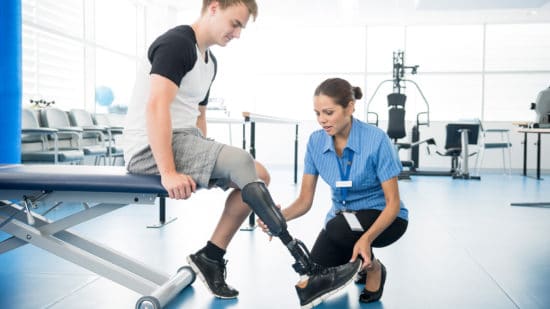It's the fifth and final day of Health Professions Week! We hope you have a restful Thanksgiving break! Today, we will highlight the last career: Orthotist and Prosthetist.
Job outlook: According to explorehealthcareers.org, the average salary is $33K-95K and the job outlook is excellent! Overall, this career offers the opportunity to work closely with patients and physicians, with a unique chance to make an immeasurable impact on an individuals quality of life.
Job description: People lose limbs or suffer orthopedic impairment for many reasons, including accidents, combat injuries, birth defects and disease. Health care workers who specialize in orthotics and prosthetics (O&P) help these patients regain their mobility by fitting them with artificial limbs (prostheses) and orthopedic braces (orthoses).
At the highest level, O&P practitioners perform a detailed assessment to determine the patient’s O&P needs and assess the patient’s functional status, including muscle development, gait, sensory function, range of motion, joint stability and skin integrity. Their specific tasks may also include:
- Develop a plan that addresses the patient’s needs and goals, including pain reduction, comfort, stability and mobility, as well as aesthetics.
- Select the appropriate design, materials and components for optimum strength, durability and function.
- Discuss the treatment plan, including benefits, risks and time involved.
Prerequisites/ Education required: Aspiring orthotists and prosthetists must complete an O&P masters program. O&P masters students come from a wide variety of undergraduate majors, but keep in mind that all O&P masters programs will have prerequisite courses. These may vary from program to program, but will likely include biology with lab, chemistry with lab, physics with lab, psychology, statistics, and human anatomy and physiology. Visit this website for a list of O&P schools.
Job outlook: According to explorehealthcareers.org, the average salary is $33K-95K and the job outlook is excellent! Overall, this career offers the opportunity to work closely with patients and physicians, with a unique chance to make an immeasurable impact on an individuals quality of life.

Comments
Post a Comment